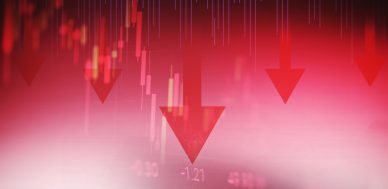Recession Ahead in Late 2019 and Early 2020?
The U.S. economy could be headed toward a recession much sooner than currently anticipated.
Long-term readers of this publication shouldn’t be surprised by this at all. They have been warned several times over the past few months.
Right now, even the data is starting to agree that a recession seems to be on the horizon. It can’t be stressed enough: late 2019 and early 2020 could be a very critical time for the U.S. economy.
You see, consumption matters a lot in the U.S.
Seventy percent of the U.S. gross domestic product (GDP) is dependent on consumption. So, if consumption slows down, the U.S. economy falls into a recession.
As it stands, we are seeing consumption statistics suggest that Americans aren’t buying and businesses aren’t spending. This is a perfect recipe for a recession.
3 Charts Saying a Recession Is Ahead
The first consumption statistic investors should look at is the U.S. housing market.
New home sales are falling hard.
Consider the chart below, which plots the new homes sales in the U.S. economy:
(Source: “New One Family Houses Sold: United States,” Federal Reserve Bank of St. Louis, last accessed March 25, 2019.)
Go back to November 2017. The annual rate of new homes sales in the U.S. was 712,000 units. Now, this rate has dropped to 607,000 units. This represents a decline of close to 15% in less than two years.
This 15% drop is alarming because declining homes sales have a trickle-down effect on the U.S. economy. Lower sales cause massive troubles for homebuilders, not to mention that Americans working in construction suffer, appliance companies sell fewer fridges, furniture shops sell fewer beds and sofas, and so on.
Consumers Are Pulling Back on Spending
Beyond this, look at consumer spending.
The chart below plots personal consumption expenditures in the U.S.
In August 2018 for example, personal consumption expenditure in the U.S. grew close to 5.42%. In December 2018, consumer spending grew by 3.97%.
In the grand scheme of things, this is a massive deceleration in consumer spending. If you look at the percentage change, in a matter of a few months, personal consumption expenditures declined close to 27%.
(Source: “Personal Consumption Expenditures,” Federal Reserve Bank of St. Louis, last accessed March 25, 2019.)
Businesses Are Becoming Skeptical
Let’s look at things from the business side as well.
The chart below plots the year-over-year percentage change in capital goods order manufacturers.
In mid-2017, businesses were spending money to buy capital goods. The orders were growing at around 13%. Now, this rate is around 4.2%.
Know that when businesses aren’t spending on capital goods, it’s a sign that they don’t expect much demand going forward.
(Source: “Manufacturers’ New Orders: Nondefense Capital Goods Excluding Aircraft,” Federal Reserve Bank of St. Louis, last accessed March 25, 2019.)
The three indicators mentioned here are just a few of the many that suggest a recession could become a reality for the U.S. economy. The list is getting bigger by the day.
I will end with this: the next recession could be a very long one. The Federal Reserve might have to do a lot more than it did in the last recession. I see lower interest rates ahead and a lot more money printing.
